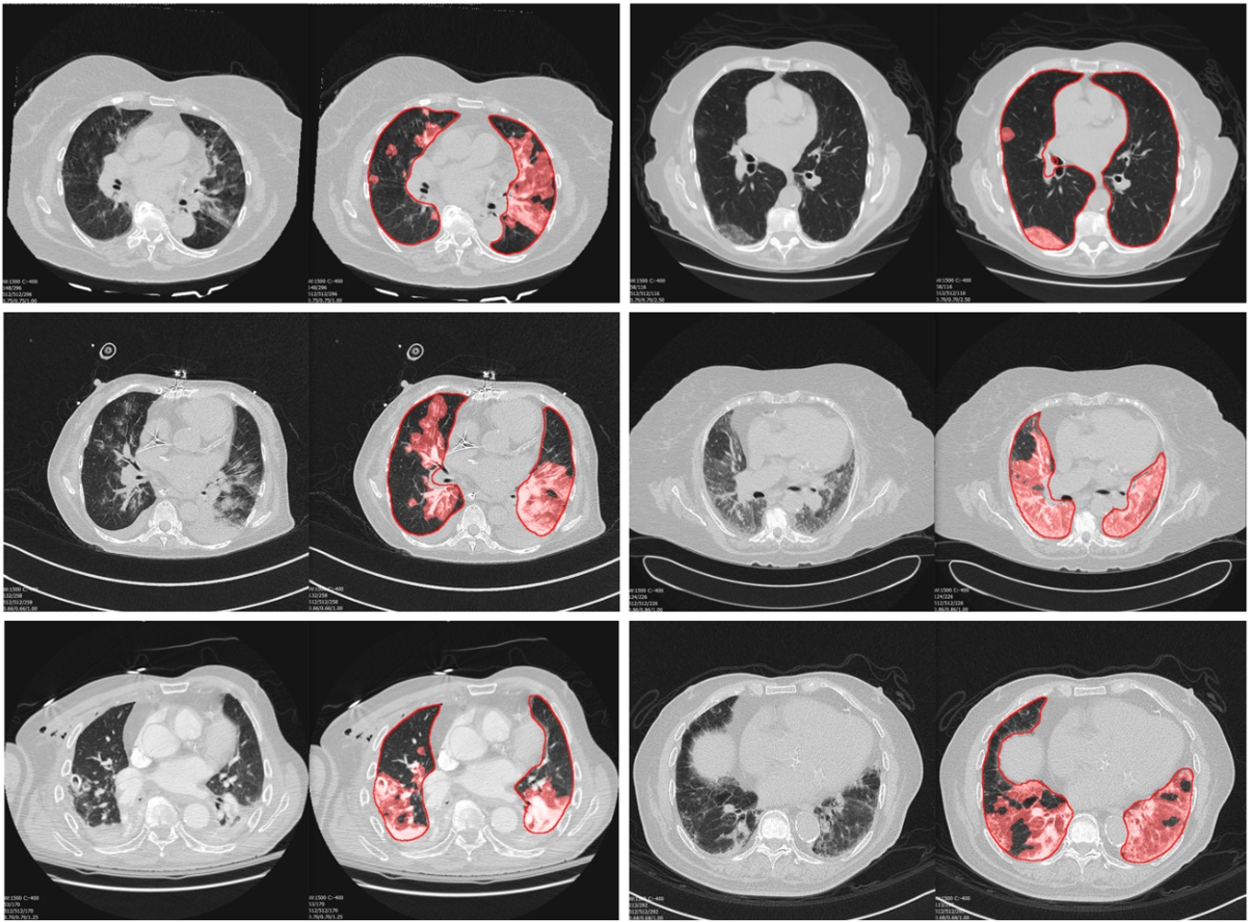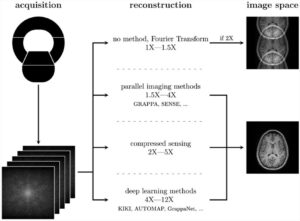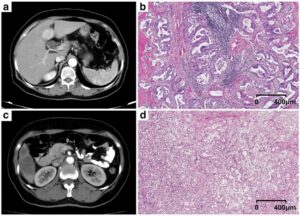This retrospective, multi-institutional study investigated machine learning classifiers and interpretable models using chest CT for the detection of COVID-19 and to differentiate this from types of pneumonia, interstitial lung disease (ILD), and normal CTs. The study included 2,446 chest CTs from across 16 different institutions and the authors’ method was found to accurately differentiate COVID-19 from other types of pneumonia, ILD, and CTs with no pathologies and may be used to facilitate the diagnosis of COVID-19.
Key points
- Unsupervised clustering reveals the key tomographic features including percent airspace opacity and peripheral and basal opacities most typical of COVID-19 relative to control groups.
- COVID-19-positive CTs were compared with COVID-19-negative chest CTs (including a balanced distribution of non-COVID-19 pneumonia, ILD, and no pathologies). Classification accuracies for COVID-19, pneumonia, ILD, and CT scans with no pathologies are respectively 90%, 64%, 91%, and 94%.
- Our deep learning (DL)–based classification method demonstrates an AUC of 0.93 (sensitivity 90%, specificity 83%). Machine learning methods applied to quantitative chest CT metrics can therefore improve diagnostic accuracy in suspected COVID-19, particularly in resource-constrained environments.
Article: Machine learning automatically detects COVID-19 using chest CTs in a large multicenter cohort
Authors: Eduardo J. Mortani Barbosa Jr, Bogdan Georgescu, Shikha Chaganti, Gorka Bastarrika Aleman, Jordi Broncano Cabrero, Guillaume Chabin, Thomas Flohr, Philippe Grenier, Sasa Grbic, Nakul Gupta, François Mellot, Savvas Nicolaou, Thomas Re, Pina Sanelli, Alexander W. Sauter, Youngjin Yoo, Valentin Ziebandt & Dorin Comaniciu













